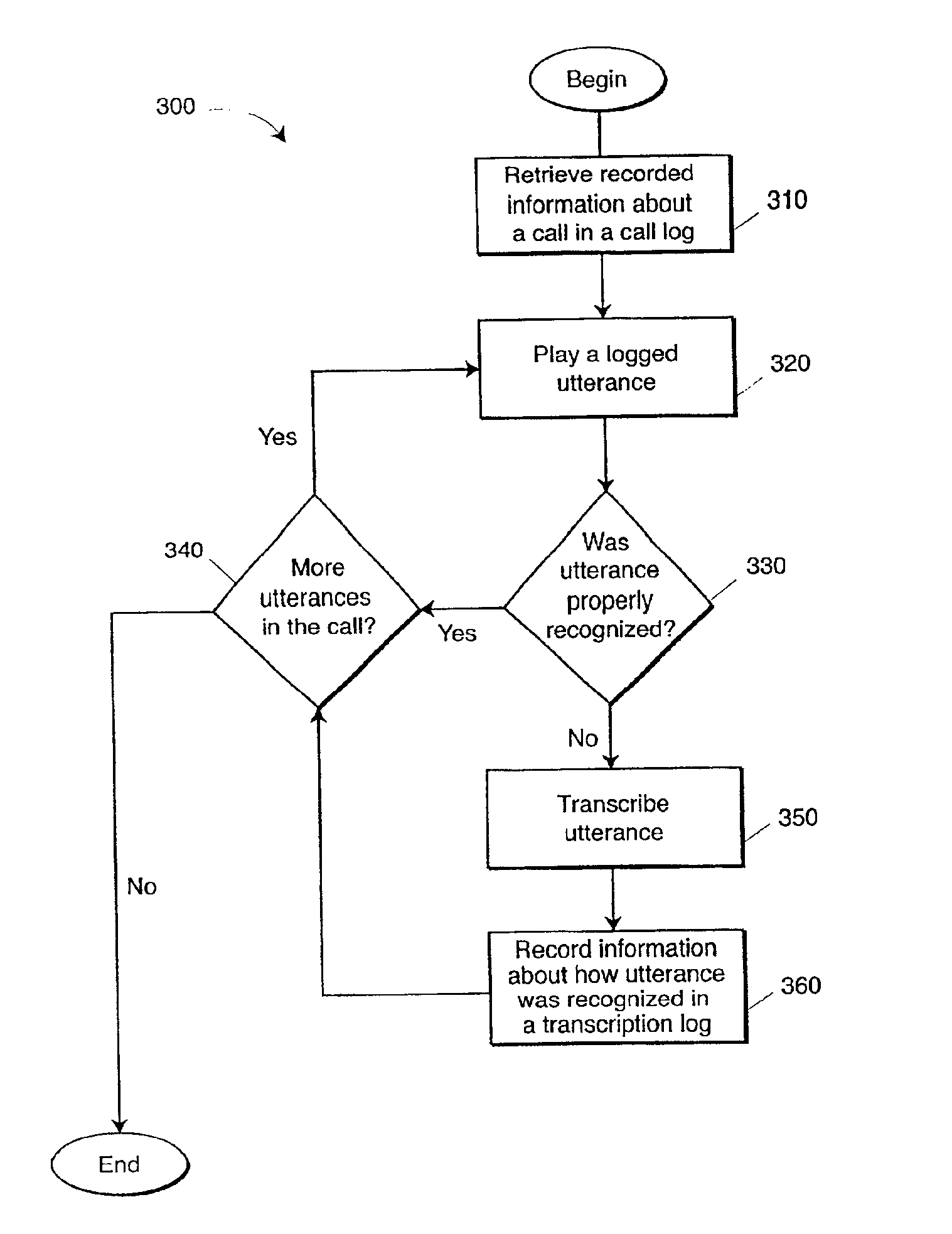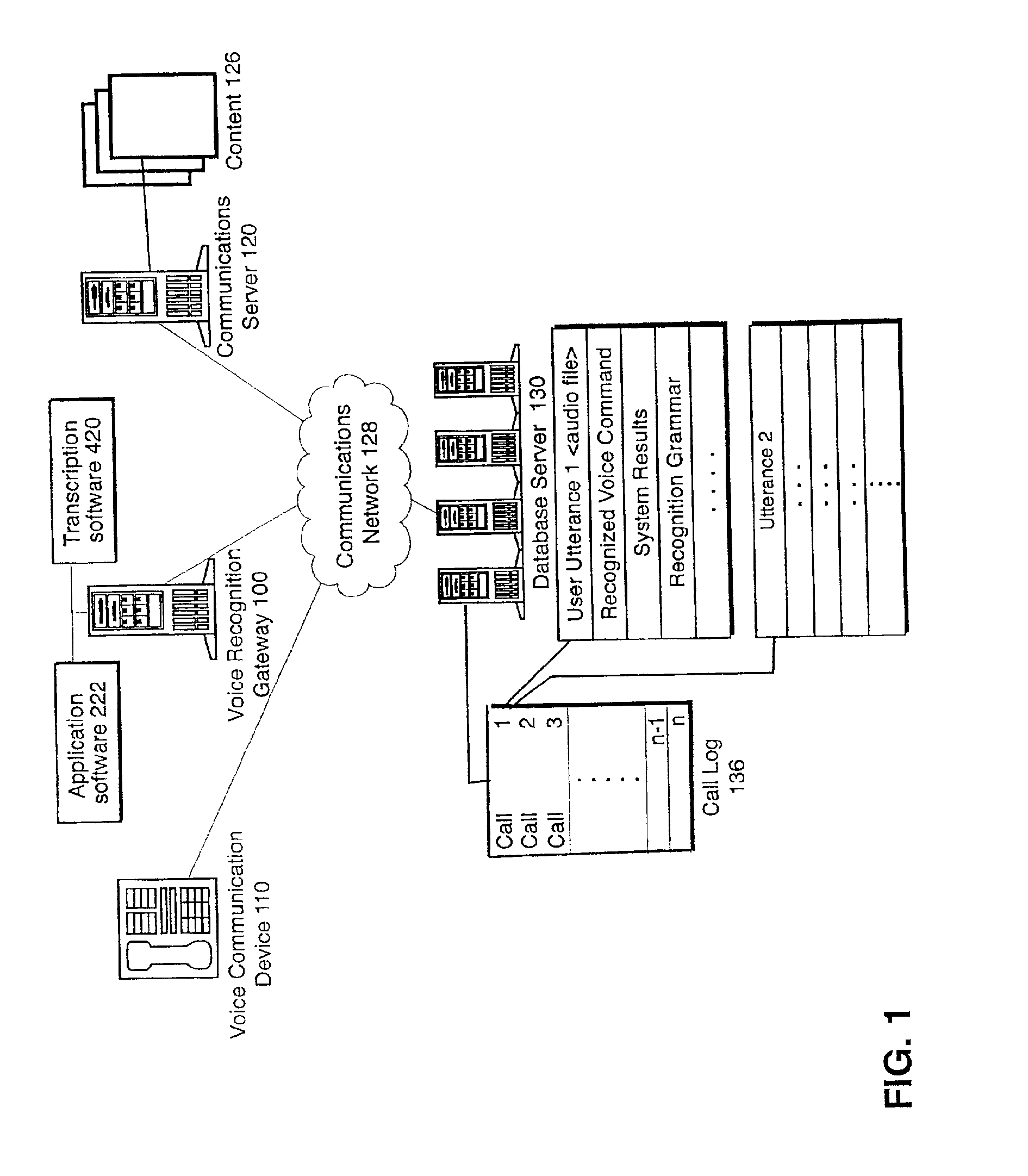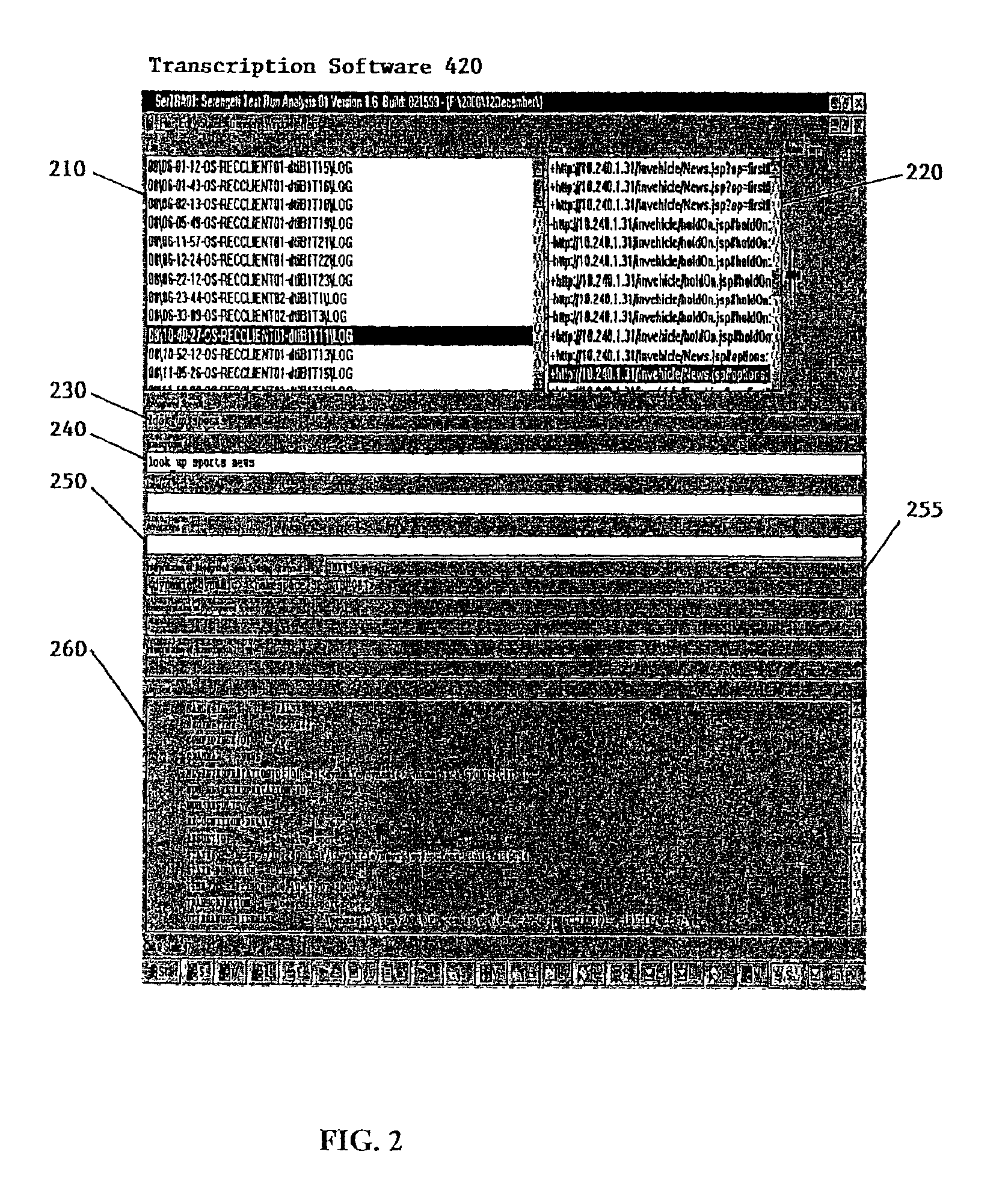These voice recognition systems, however useful, are not perfect.
Typically, a voice recognition system cannot recognize all voice commands or utterances spoken by the user.
In addition, voice recognition systems typically only understand certain common accents represented by respective acoustic models.
Thus, a user who speaks in a tone or accent other than that recognized by the recognition system, may have difficulty communicating with the system.
That is, the system may fail to recognize a word or the
phrase included in its grammar if the word or a
phrase is spoken in a way that acoustically does not match what is expected by the system.
For example, a voice recognition system which has acoustic models for various U.S. regional accents only may not properly recognize utterances which are spoken with an Australian accent.
This leads to improper recognition and false rejects, thereby reducing system efficiency and contributing to user
frustration.
However, due to the large number of errors that may occur over multiple sessions with many users, a
human operator may not be able to effectively and efficiently
handle the tasks of monitoring errors, hypothesizing, and implementing solutions.
A recognition
delay is the amount of time it takes for the system to recognize a user utterance.
A recognition error is detected if the recognized voice command does not match a corresponding transcribed utterance.
Because certain types of error are associated with certain reasons or
sources of error, the system can hypothesize the
sources of error based on the types of error recorded in the error log.
Accordingly, in one embodiment, if IGFA or OGFA type errors are recorded in the error log, the system may determine that a likely source of error is acoustic similarity between the recognized voice command and the user utterance.
Yet the system detects an error if a user utterance is mistakenly matched with an improper word or
phrase in the recognition grammar.
If IGFA or IGFR type errors are detected, the system may determine a likely source of error to be lack of alternate pronunciations in the recognition grammar.
Lack of sufficient phonetic definitions along with comprehensive acoustic models may result in particular vocalizations or pronunciations of a word or phrase being mistakenly rejected or accepted.
Thus, in a voice recognition system with high
confidence threshold setting, even a slight difference in acoustic similarity can cause the voice recognition system to reject a user utterance it otherwise should have accepted, leading to an IGFR.
In certain embodiments, if an OGFA
type error is detected, the system may determine the source of error to be a
low confidence threshold.
A voice recognition system with a
low confidence threshold level may not require enough acoustic similarity, such that dissimilar or slightly similar acoustic models may be matched mistakenly.
Another source of error can be recorded environment
noise that may be due to the voice recognition system's sensitivity threshold being set too high or too low.
Since environment
noise is unlikely to be meaningfully recognized by the voice recognition system, its acceptance as input constitutes an error.
In some embodiments, the system may determine a source of error to be a low sensitivity threshold if an IGFR
type error is detected.
On the other hand, the system may determine a source of error to be a high sensitivity threshold if an OGFA
type error is detected.
On the other hand, if the voice recognition system is not sensitive enough, then it does not accept as input utterances that are provided at normal audio levels.
Another
noise-related source of error involves the
timeout threshold.
For example, if the
timeout threshold is too short, then a user has very little time to begin speaking, thus contributing to user
frustration.
If the system detects this type of error, it may increase the
timeout threshold.
On the other hand, if the timeout is too long, then an excessive amount of environment noise may be recorded at the beginning of a recorded user utterance.
The excess noise distorts the user utterance and decreases the likelihood of a match with the recognition grammar.
Yet, another noise-related source of error involves the end-of-speech threshold.
In either case, if the end-of-speech threshold is too short, the user may not have adequate time to give a complete utterance, and therefore the utterance will not be correctly recognized.
On the other hand, if the end-of-speech threshold is too high, then an excessive amount of environment noise may be recorded at the end of a recorded user utterance.
These many searches and comparisons may result in an excessively long
delay in recognition of user utterances, which can frustrate the user.
Furthermore, accuracy typically goes down in high
perplexity systems.
For example, it is more difficult to recognize one of 10,000 company names than it is to recognize one out of ten.
Another source of error is frequent out-of-grammar utterances.
If certain utterances are frequently used by users, but have no corresponding term in the recognition grammar, those utterances will needlessly go unrecognized.
If this type of error is detected, the system may modify the recognition grammar to include such frequent out-of-grammar utterances.
 Login to View More
Login to View More  Login to View More
Login to View More 


